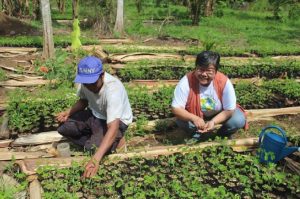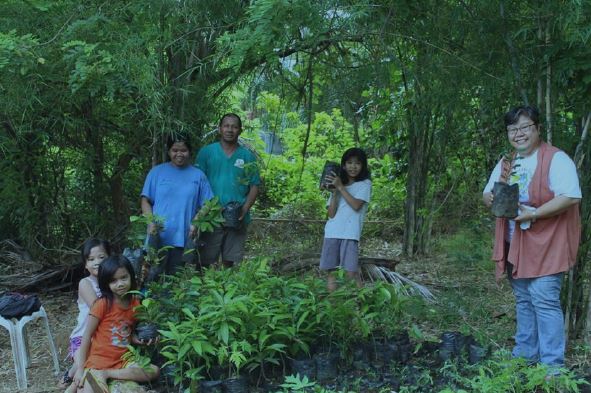By Sister Marvie L. Misolas, MM
When I am not teaching my graduate students at Miriam College and Philippine Women Universities, I find myself visiting farmers and their communities whom I collaborate with projects that promote sustainable development through forest and watershed restorations and conservation to address climate change. My purpose in working on these projects is to align my work/ministry with some of the United Nations sustainable development goals (SDGs).
In early March, I was invited by a peasant movement leader, Maria (Maria is used as a pseudonym for the farmer leader to protect her identity), to collaborate with 10 peasant families who have been displaced recently from their farming land because of land grabbing by powerful developers who are supported by town leaders. Maria’s husband was murdered a year ago inside their farm area. Thus, their families left their farmland land and are in hiding for fear of their lives.
The seedling production project will be situated somewhere in Laguna using a borrowed land. The community joined the government’s National Greening Program. The government agency on natural resources (DENR)will buy the seedlings from them for P7 each (about 15cents of a dollar). The group entered an agreement whereby Rizal Provincial Environment Office will buy 20,000 Acacia, Narra (a Philippine hardwood) and Ipil-ipil seedlings. These seedlings will be planted in watershed areas somewhere in Tanay, Rizal sometime in July or August. With funding from Maryknoll Sisters, the farmers and their families worked together to prepare and plant the more than 20,000 seedlings during the months of April and May. These seedlings will be bought by the Rizal-PENRO in July-August when rainy season starts and planting tree seedlings will be carried out.

It was fun to meet the families who were part of the project. One of those I visited had fruit tree seedlings in their backyard, and the children were excited to show me their plants. Before I left, the family gave me a bunch of green cooking bananas harvested from their backyard to take to the convent.
I went back in late July for another site visit. Philip and I checked the seedlings that were almost two feet tall but we noticed some insects are eating the leaves of acacia seedlings. We checked and found out ants were eating the leaves and so he decided that to spray the ants to save most of the seedlings. After two weeks, I received a call from Maria saying, most of the farm seedlings’ leaves dried as well as the grass around the seedlings, suspecting someone sabotaged the seedlings ready for planting by spraying weed killer. The incidence was reported to the local police hoping to get the perpetrators. Meanwhile, the farmers did their best to save the remaining good seedlings. In August, most of the seedlings were transferred to the mountains of Rizal for reforestation.
Maria and her group wrote a critical reflection of their effort to help in the reforestation program of the government and the lessons learned from this initial project. The project promoted their livelihood while helping rehabilitate the Philippine forest and collaborating with government agency. They are also aware that their group is vulnerable to attacks by people who are against them who are fighting to advocate for farmers right to land and livelihood.

